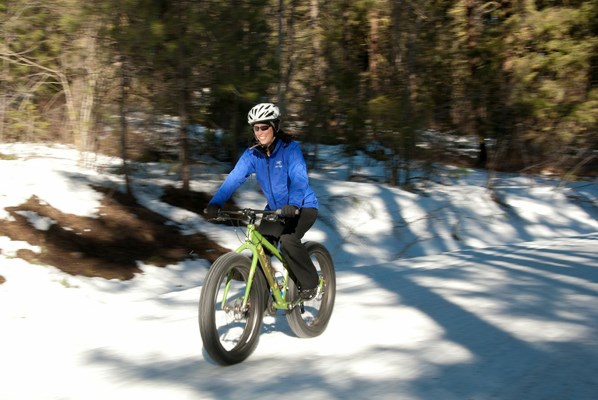It is time to resurrect the winter bike.
Every time I see someone riding a brand new bike, I think of the movie Toy Story and I feel sorry for the old bike. With a new bike taking its place, the old bike has been left in the garage or in the back of someone’s storage locker to collect dust and quickly be forgotten.
I want to see these winter bikes resurrected and put back in their places on the road where they belong.
Having a second bike is helpful but definitely not necessary to riding in Â鶹´«Ã½Ó³»all year round. As long as you clean your bike after every ride, you don’t need more than one. But if you have a second bike, especially a bike that you no longer care that much for, it will help preserve the life of your true love, your newest bike.
A winter bike is the workhorse of your fleet. It doesn’t have to be light, look pretty, stay clean or have expensive components. In fact, a heavy winter bike will do a lot to help your fitness training.
There are a few keys elements to a good winter bike. The first is that it must be safe to ride. If you wouldn’t feel comfortable letting your child ride the bike, make sure you fix it before trying to ride it, especially in harsh winter conditions.
Once you deem the bike safe to ride, you will need to spend some time and maybe a bit of money to set up your winter bike to the same geometry as your main bike.
After a season or more of riding, your body is accustomed to sitting in a specific position and pedalling with precise muscles. If you force a change by switching to a different set up, you may find your muscles will rebel and you will wonder why you hate your winter bike.
If you have a bike in a slightly different size, you can sometimes make up the difference by moving the handle bars by changing the length of the stem, which is the extension that holds the handle bars to the frame.
You can also move the seat forward or back as well as moving it higher or lower. Your goal is to make the winter bike feel almost as comfortable as your every day bike. I say almost because it is never going to be perfect and this is why it’s your winter bike.
This may mean your first bike is no longer a good fit for you — that’s fine. Sell it to someone who does fit it and use the money to buy a second-hand bike.
Although it may seem like an extra expense up front to service your old bike or exchange it for something else, having a second bike will save you money. It reduces the costs of replacing the expensive parts on your newer bike because you’re not as frequently riding in the rain and getting road grime, salt and sand into the parts.
If you don’t have an old bike or you want to purchase a second bike, consider these suggestions based on how you want this bike to improve your riding skills or provide some variety to your training.
Cyclo-cross
A cyclo-cross bike is a versatile choice. Not only has it been designed to ride in mud and dirt, but you can also transition the bike for non-technical off-road trails like those at Pacific Spirit Park for a mental and physical break from road traffic. Because of small obstacles, riding on trails will also improve your bike-handling skills.
Mountain bike
A hard tail or cross-country mountain bike allows you to ride more aggressive trails and still get a cardio workout. The geometry of a mountain bike is so completely different that you don’t have to worry about matching your fit, but I would recommend a professional set-up. Like cyclo-cross, mountain biking will benefit your bike-handling skills immensely and you’ll be maneuvering around and over larger obstacles.
Fixed-gear single speed
For more experienced cyclists, riding a fixie will build leg strength, improve your riding skills and help develop a faster, more comfortable cadence. Since the bike has only one gear, you are forced to pedaling whenever the bike is moving. You will quickly learn how to climb Spanish Banks in the same gear you’d use to sprint for the ego win at Iona Point and spin down a hill.
Kristina Bangma is a coach, personal trainer and writer with a love of riding and racing. Email questions to [email protected]



